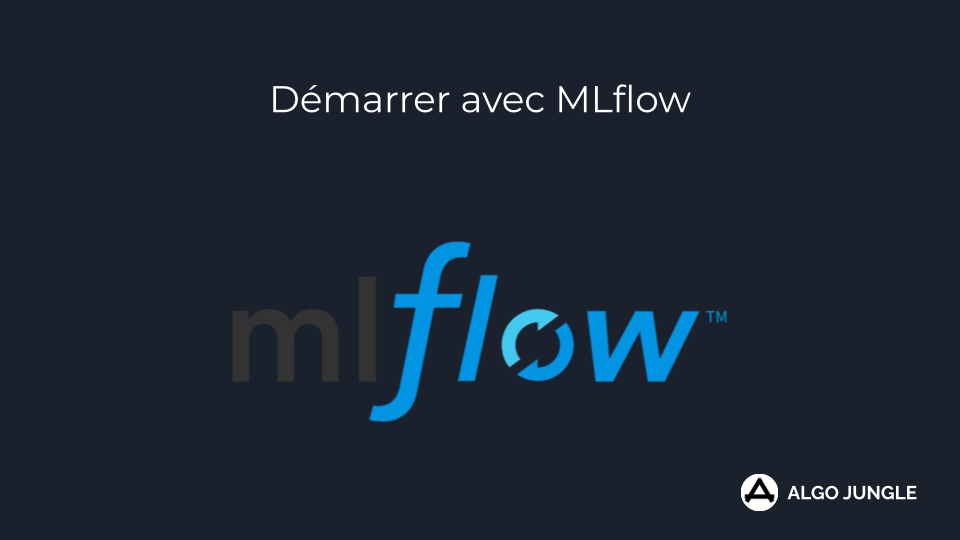Démarrer avec MLflow
Spark est une plateforme open-source de traitement de données volumineuses. Au fil des années, Spark s'est imposé comme l'outil de référence pour l'ingénierie de données. Dans ce guide ultime, je vous présente PySpark, l'API Python de Spark.

Packages#
Paths & Config#
MLFLOW_HOST = "127.0.0.1"
MLFLOW_PORT = "8080"
MLFLOW_URI = f"http://{MLFLOW_HOST}:{MLFLOW_PORT}"
EXPERIMENT_NAME = "Get Started with MLflow"
DATA_URL = "https://raw.githubusercontent.com/joekakone/datasets/master/datasets/ml-challenges/diabetes.csv"
mlflow.set_tracking_uri(uri=MLFLOW_URI)
mlflow.create_experiment(EXPERIMENT_NAME)
mlflow.set_experiment(EXPERIMENT_NAME)
Output
<Experiment: artifact_location='mlflow-artifacts:/934956080996859228', creation_time=1707548279279, experiment_id='934956080996859228', last_update_time=1707548279279, lifecycle_stage='active', name='Get Started with MLflow', tags={}>
Split Train/Test#
Train model#
# Hypterparameters
params = dict(n_estimators=100, max_depth=6, max_features=3)
# Create model
rf = RandomForestClassifier(**params)
# Train
rf.fit(X_train, y_train)
with mlflow.start_run():
# Tags
mlflow.set_tag("Training Info", "Basic LR model for diabete data")
# Dataset
mlflow.log_input(mlflow.data.from_pandas(dataset, source=DATA_URL), context='training')
# Hyperparameters
mlflow.log_params(params)
# Infer the model signature
signature = infer_signature(X_train, rf.predict(X_train))
# Score
mlflow.log_metric("accuracy", score)
# Log the model
model_info = mlflow.sklearn.log_model(
sk_model=rf,
artifact_path="diabete_model",
signature=signature,
input_example=X_train,
registered_model_name="diabete-classifier",
)
import mlflow
logged_model = 'runs:/38ad9aee189343cdadfcc79ec35ecc55/diabete_model'
# Load model as a PyFuncModel.
loaded_model = mlflow.pyfunc.load_model(logged_model)
# Predict on a Pandas DataFrame.
import pandas as pd
loaded_model.predict(pd.DataFrame(X_test))
MLflow génère un fichier MLmodel
artifact_path: iris_rf
flavors:
python_function:
env:
conda: conda.yaml
virtualenv: python_env.yaml
loader_module: mlflow.sklearn
model_path: model.pkl
predict_fn: predict
python_version: 3.10.12
sklearn:
code: null
pickled_model: model.pkl
serialization_format: cloudpickle
sklearn_version: 1.6.0
is_signature_from_type_hint: false
mlflow_version: 2.20.0
model_size_bytes: 178735
model_uuid: 53c6b22e667043919b1333d15909959e
run_id: 031e1f8d884e40ebba5a9c3c1a93337f
signature:
inputs: '[{"type": "double", "name": "sepal length (cm)", "required": true}, {"type":
"double", "name": "sepal width (cm)", "required": true}, {"type": "double", "name":
"petal length (cm)", "required": true}, {"type": "double", "name": "petal width
(cm)", "required": true}]'
outputs: '[{"type": "tensor", "tensor-spec": {"dtype": "int64", "shape": [-1]}}]'
params: null
type_hint_from_example: false
utc_time_created: '2025-01-25 17:07:46.036141'